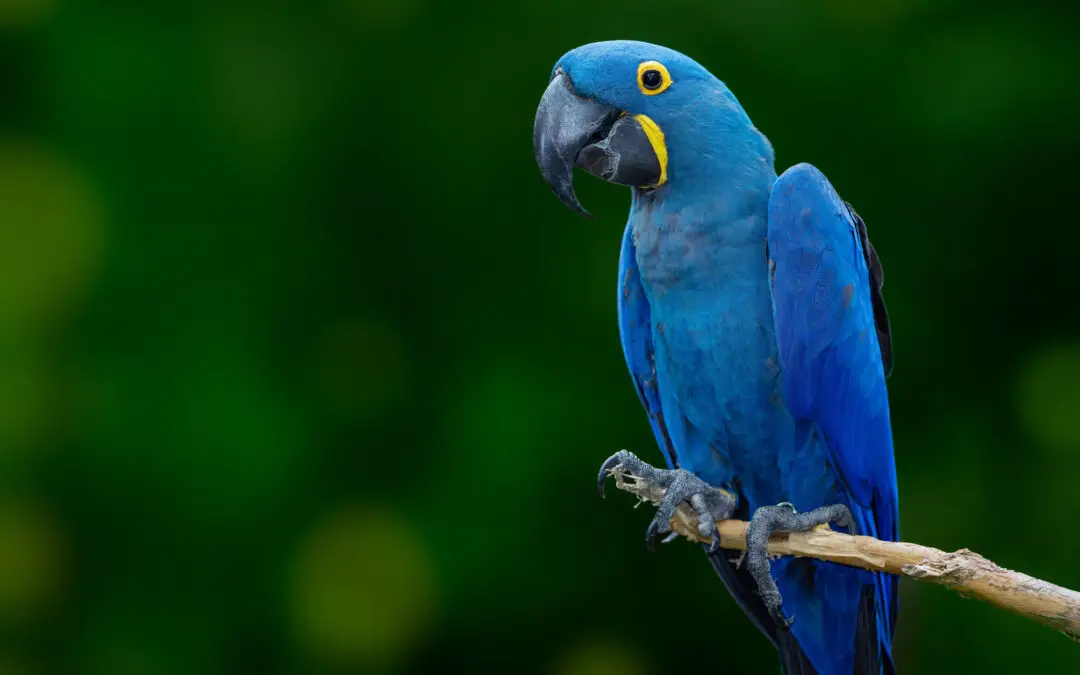Parrots, scientifically classified as Psittaciformes, are renowned for their remarkable longevity compared to other avian species. This article aims to explore the factors that contribute to the extended lifespan of parrots and unravel the mysteries behind their exceptional survival rates. By adopting an academic style of writing, this objective and impersonal analysis will eliminate personal pronouns in order to maintain a neutral perspective throughout the discussion.

The Biology of Parrots
The remarkable longevity of parrots can be attributed to their unique biology.
Parrots exhibit distinct reproduction patterns that contribute to their long lifespan. Unlike many other bird species, parrots have a low reproductive rate, with females typically laying only one or two eggs per clutch and having relatively long interclutch intervals. This reproductive strategy allows for increased parental investment in each offspring, ensuring their survival and enhancing the overall fitness of the species.
In addition to their reproductive patterns, parrots also possess physiological adaptations that promote longevity. They have an exceptionally efficient respiratory system, enabling them to extract more oxygen from each breath and reducing the production of harmful byproducts such as reactive oxygen species.
Furthermore, parrots exhibit enhanced antioxidant defenses, which protect against oxidative stress and cellular damage associated with aging.
These biological characteristics collectively contribute to the impressive lifespan observed in parrot species.
Social Behaviors and Longevity
One possible explanation for the extended lifespan of parrots could be attributed to their social behaviors. Parrots are highly social creatures that form strong bonds with other members of their flock. These social interactions and the resulting bonds play a crucial role in their overall well-being and may contribute to their longevity.
The impact of social bonds on parrot longevity can be seen through several key factors:
- Emotional support: Social interactions provide emotional support to parrots, reducing stress levels and promoting overall health.
- Cooperative breeding: Parrots engage in cooperative breeding, where multiple individuals help raise offspring. This division of labor ensures better care for the young, leading to increased survival rates.
- Learning from others: Social interactions allow parrots to learn from each other, acquiring important skills and knowledge that aid in their survival and adaptability.
In conclusion, the social nature of parrots plays a significant role in their extended lifespan. The emotional support, cooperative breeding, and learning opportunities provided by these social behaviors contribute to the overall well-being and longevity of these remarkable birds.
Diet and Nutrition
An important factor contributing to the extended lifespan of parrots is their dietary habits and nutritional intake. Parrot feeding habits play a crucial role in ensuring their overall health and longevity. These birds have evolved to consume a diverse range of foods, including fruits, nuts, seeds, and vegetation. Their ability to crack open hard-shelled nuts demonstrates their strong beaks and adaptability to different food sources.
Parrots have specific nutritional requirements that must be met for optimal health. A balanced diet should include essential nutrients such as vitamins (A, B complex, C), minerals (calcium, iron), proteins, and healthy fats. Meeting these requirements can be achieved through offering a variety of fresh fruits and vegetables alongside formulated pelleted diets specifically designed for parrots.
To further understand the importance of proper nutrition in parrot longevity, consider the following:
| Nutrient | Function | Food Sources |
|---|---|---|
| Vitamin A | Promotes vision health | Carrots, sweet potatoes |
| Calcium | Supports bone strength | Kale, broccoli |
| Protein | Essential for growth and repair | Lentils, quinoa |
By meeting their nutritional needs through diverse food sources, parrots are able to live longer lives with improved health outcomes.

Environmental Factors
Environmental factors play a significant role in determining the lifespan of parrots, as they are highly sensitive to changes in their surroundings.
Climate effects can greatly impact parrot populations. Extreme temperatures and weather events such as hurricanes or droughts can lead to reduced food availability and nesting sites, ultimately affecting their survival.
Additionally, habitat preservation is crucial for the long-term survival of parrots. Deforestation and habitat destruction due to human activities threaten the existence of many parrot species, limiting their access to suitable nesting sites and food sources. This loss of habitat also increases their vulnerability to predators and disease.
Conservation efforts aimed at protecting and restoring parrot habitats are essential for ensuring their longevity in the wild.
- Loss of natural habitats due to deforestation.
- Increased vulnerability to predators.
- Limited access to suitable nesting sites.
- Reduced food availability due to habitat destruction.
Genetic Factors and Longevity
Genetic factors play a crucial role in determining the lifespan of parrots, as they contribute to their overall health and resilience against diseases and age-related conditions. Telomeres, which are repetitive DNA sequences at the ends of chromosomes, have been identified as key contributors to the aging process. Shorter telomeres are associated with increased mortality rates and accelerated aging in various species. Longevity research in other animals has also shed light on genetic factors that influence lifespan. Studies conducted on mice and fruit flies have identified specific genes that regulate longevity and impact various biological processes such as metabolism, stress response, and cellular repair mechanisms. Understanding these genetic factors can provide insights into how parrots achieve their exceptional longevity and may offer potential avenues for extending human lifespan.


